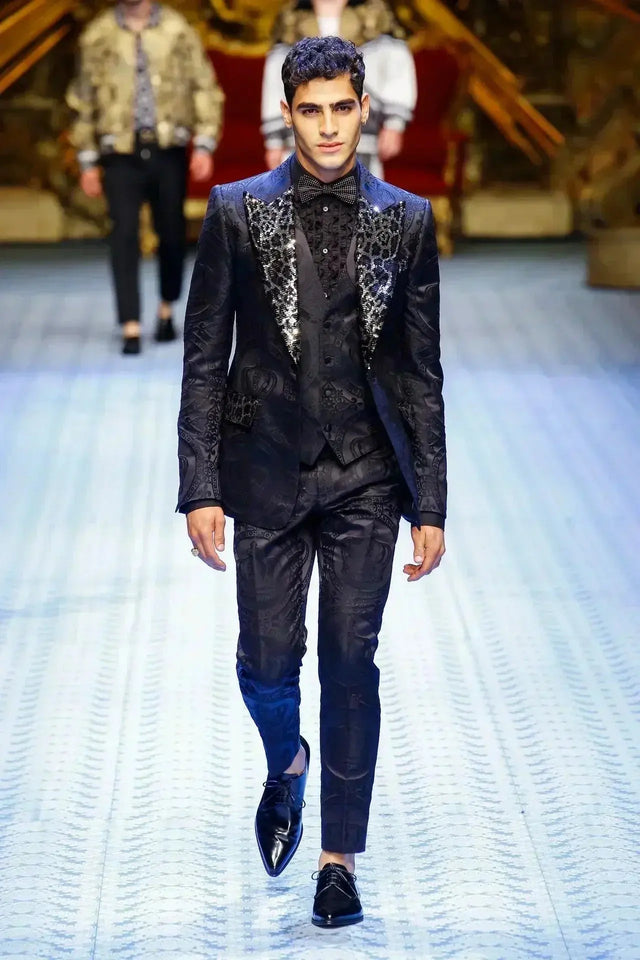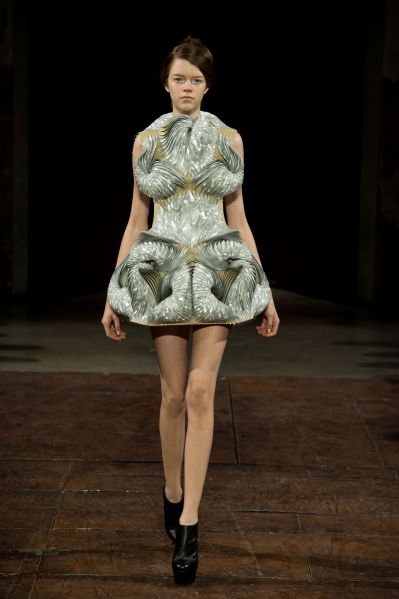Fashion Meets Function in the New Summer Line at Sedgars
Wiki Article
The Impact of Sustainable Practices on Modern Fashion Styles
Lasting techniques have actually improved modern-day style, driving a shift in the direction of environmentally friendly materials and ethical production. Developers currently prefer organic cotton, recycled fabrics, and cutting-edge textiles. Upcycling has actually transformed waste into one-of-a-kind garments, while transparency in sourcing has become essential. This evolution mirrors a growing recognition amongst consumers about their buying selections. As the market adapts, new patterns emerge that obstacle typical visual appeals. What might the future hold for style in this framework?The Rise of Eco-Friendly Products
Just how have green materials transformed the fashion business? The appearance of environment-friendly products has actually substantially reshaped fashion, driving brands to reconsider their sourcing and production processes. These sustainable options, consisting of natural cotton, hemp, and recycled polyester, use a lowered environmental impact compared to standard textiles. Designers are currently focusing on these products, acknowledging that consumers significantly prefer brands committed to sustainability.This change has caused cutting-edge approaches, where fashion homes trying out all-natural dyes and naturally degradable materials, boosting both visual appeal and ecological duty. Additionally, cooperations between developers and sustainability-focused business have sped up the assimilation of environment-friendly products into mainstream collections.As a result, the style market is observing a extensive but progressive adjustment, moving towards a much more lasting future. This dedication not just reflects advancing customer values but additionally shows the capacity for style to lead in ecological stewardship.Upcycling: Changing Waste Into Fashion
Upcycling has actually emerged as a transformative pressure in the style sector, converting discarded materials into desirable garments and accessories. This cutting-edge method not only minimizes waste yet likewise urges creative thinking and creativity amongst developers. By repurposing items such as old clothing, fabric scraps, and even non-textile products, upcycling develops unique items that narrate, mirroring individual style and ecological consciousness.Many independent developers and modern brands have accepted upcycling as a core technique, interesting consumers who value sustainability and originality. The process usually entails techniques like reconfiguration, jumble, or embellishment, enabling countless opportunities in design. Therefore, upcycled fashion resonates with those looking for to make environmentally accountable choices while still sharing individual aesthetics.In significance, upcycling not only minimizes the environmental effect of style waste yet likewise promotes a brand-new culture of technology and appreciation for workmanship within the sector.Moral Production: Fair Labor and Transparency
Honest production in style highlights the relevance of reasonable earnings for employees, making certain that workers get just settlement for their initiatives. Openness in supply chains is essential, allowing consumers to comprehend the beginnings of their garments and the conditions under which they are made. Additionally, honest sourcing practices promote obligation in picking materials, enhancing the commitment to sustainability and social justice.Fair Incomes for Employees
While the fashion business increasingly accepts lasting practices, guaranteeing reasonable earnings for employees continues to be an important component of ethical production. Fair earnings not just equip workers however additionally improve the total lifestyle for individuals in the supply chain. Many brands are now taking on policies that prioritize fair payment, recognizing that a sustainable future can not be constructed on exploitation. By dedicating to fair pay, business promote commitment and boost productivity amongst their employees (Designer Store Sedgars). Furthermore, customers are ending up being a lot more knowledgeable about labor concerns and are significantly requiring openness regarding employees' legal rights. Consequently, brands that focus on fair incomes are not just straightening with moral criteria but are likewise placing themselves competitively in a market that worths social obligationTransparency in Supply Chains
The dedication to fair earnings is intrinsically linked to the wider concern of transparency in supply chains within the garment industry. Transparency guarantees that customers are informed regarding the beginnings of their garments and the problems under which they are generated. Brands that focus on transparency typically release detailed reports outlining their supply chain procedures, labor methods, and sourcing of products. This visibility cultivates count on and loyalty among customers that increasingly require ethical practices. Additionally, transparency helps to hold companies liable for their labor techniques, enabling analysis and motivating enhancements. By exposing the intricacies of their supply chains, brands can add to an extra equitable style community, inevitably advertising not only ethical manufacturing but additionally sustainable consumption amongst their customers.
Moral Sourcing Practices
As consumers become more aware of the effect of their getting choices, brand names are progressively embracing moral sourcing practices that focus on reasonable labor and environmental sustainability. These techniques involve making certain that workers receive fair earnings, risk-free working problems, and are treated with self-respect. Many fashion business are relocating away from unscrupulous labor techniques and are instead working together with distributors who follow ethical requirements. Openness in sourcing further improves customer trust fund, as brands divulge their supply chain techniques, allowing clients to make educated selections. This shift towards honest sourcing not just adds to social duty but likewise resonates with a growing market that worths sustainability in vogue. As an outcome, honest sourcing is ending up being a specifying quality of modern fashion brands.The Function of Modern Technology in Lasting Fashion
The fashion sector has long been associated with waste and contamination, modern technology is progressively changing it right into an extra lasting market. Developments such as 3D printing make it possible for developers to develop garments with much less material waste, while digital material printing permits on-demand production, reducing excess supply. Furthermore, improvements in recycling innovations are helping with the repurposing of textiles, minimizing landfill contributions.In addition, information analytics and fabricated knowledge assistance brand names forecast patterns much more accurately, ensuring they create just what is required. Blockchain technology boosts transparency in supply chains, permitting customers to trace the beginnings of their clothes and validate sustainable methods. Wearable technology is advancing, promoting resilience and functionality in style things. With these technological developments, the apparel industry is progressively adopting a more round economy model, fostering sustainable techniques that can redefine its environmental influence.
Mindful Consumerism: Moving Buyer Mindsets
Mindful consumerism is reshaping the fashion business as buyers significantly prioritize moral fashion selections. This change is driven by a demand for openness, compelling brand names to reveal their practices and supply chains. Consequently, brand name loyalty is developing, with consumers most likely to support those that straighten with their values.Ethical Style Options
Shifting customer frame of minds in the direction of moral fashion choices reflects an expanding recognition of the influence of consumer behavior on the atmosphere and culture. Consumers are progressively prioritizing brands that highlight honest production methods, lasting materials, and reasonable labor problems. This modification is sustained by a need to support companies that align with individual values, promoting an extra accountable fashion business. As a result, brand names are adjusting their approaches, including openness and sustainability into their core missions. Ethical style selections not just test traditional retail techniques but additionally urge customers to assess the lifecycle of their garments. This shift symbolizes a cumulative step in the direction of a much more mindful strategy to fashion, where the ramifications of purchases prolong past simple visual appeals to encompass broader social and environmental considerations.Impact of Transparency

Brand Name Commitment Shift
What drives customers to remain devoted to brands in today's style landscape? Significantly, sustainability plays a crucial duty. As recognition of environmental concerns expands, consumers are moving in the direction of brand names that demonstrate moral techniques and openness. This shift towards conscious consumerism has actually caused a reevaluation of typical brand loyalty, where worths straighten much more closely with individual principles. Brands that prioritize lasting products, fair labor methods, and green manufacturing techniques are often awarded with consumer loyalty. This development is shown in acquiring decisions, as purchasers are a lot more going to sustain brands that contribute positively to society. As a result, sustainability has actually come to be not just an advertising and marketing device, but a defining variable in establishing long lasting brand name links with an extra critical and socially mindful customer base.The Impact of Sustainable Fashion on Trends
As consumers significantly prioritize sustainability, the fashion business is experiencing a significant transformation in fads. This shift has actually led to the rise of eco-friendly materials, such as natural cotton, recycled Designer Store Sedgars polyester, and cutting-edge fabrics derived from lasting sources. Designers are significantly concentrated on developing functional, lasting garments that urge mindful consumption, relocating away from quick fashion's short lived styles.Moreover, moral methods are becoming a hallmark of brand identification, with many firms highlighting their commitment to reasonable labor and ecological stewardship. The impact of lasting fashion is additionally obvious in the appeal of thrift purchasing and garments swaps, promoting a round economy and reducing waste.Fashion shows and projects now usually feature lasting collections, emphasizing the visual appeal of eco-conscious options. Overall, the effect of lasting fashion on fads shows a broader social shift in the direction of responsible consumerism, forming the future of the sector in profound means.Future Developments in Eco-Conscious Layout
The development of lasting fashion trends prepares for future technologies in eco-conscious style. As customers progressively prioritize environmental responsibility, developers are discovering innovative materials and strategies. Naturally degradable textiles, such as mycelium and algae-based fabrics, are getting grip, assuring to lower waste and dependence on petroleum-based fibers.Moreover, innovations in innovation are leading the method for innovative manufacturing methods. 3D printing, for example, permits on-demand production, minimizing excess inventory and source consumption. Circular style models are also emerging, emphasizing recycling and upcycling, enabling garments to have prolonged life cycles.Collaboration between brands and innovation business is crucial for these innovations. By leveraging data analytics and expert system, designers can produce extra sustainable supply chains and lower their carbon footprints. As eco-conscious methods remain to develop, they basically change the fashion landscape, pressing the limits of imagination while protecting the earth.Regularly Asked Concerns
Just How Can I Identify Lasting Fashion Brands When Purchasing?
To identify sustainable fashion brand names while shopping, one should seek qualifications, scrutinize products, assess manufacturing openness, and study brand values. Sedgars South Africa. Engaging with consumer testimonials and sustainability records can further assist informed acquiring decisionsAre Second-Hand Garments Thought About Sustainable Style?
Second-hand clothes are frequently related to as lasting fashion as a result of their role in minimizing waste and extending the lifecycle of garments. By buying used things, consumers add to a much more environmentally friendly apparel economic climate.What Is the Ecological Effect of Rapid Fashion?
The ecological impact of quick style is considerable, adding to contamination, too much waste, and resource exhaustion. The sector's rapid manufacturing cycles often focus on profit over environmental sustainability, exacerbating environment change and harming ecosystems worldwide.Just How Do Sustainable Practices Affect Style Rates?
Lasting practices commonly result in greater production prices because of ethical sourcing and eco-friendly products. Sedgars. Style pricing might raise, showing the financial investment in environmental obligation and reasonable labor practices, which can influence consumer getting choices.Can Lasting Fashion Be Trendy and trendy?
The question of whether lasting fashion can be trendy and stylish typically develops. Lots of designers now blend environment-friendly materials with innovative designs, proving that sustainability and modern aesthetics can coexist, appealing to a fashion-conscious target market. Lasting methods have reshaped modern-day style, driving a shift towards green products and honest production. While the fashion industry increasingly welcomes lasting methods, making certain reasonable incomes for employees remains a vital component of moral production. Conscious consumerism is improving the fashion industry as customers progressively prioritize moral fashion selections. The impact of sustainable style is likewise evident in the appeal of thrift purchasing and garments swaps, reducing and advertising a circular economy waste.Fashion programs and projects now usually include lasting collections, stressing the visual charm of eco-conscious selections. To recognize lasting fashion brand names while buying, one need to look for accreditations, inspect materials, assess manufacturing openness, and study brand values.Report this wiki page